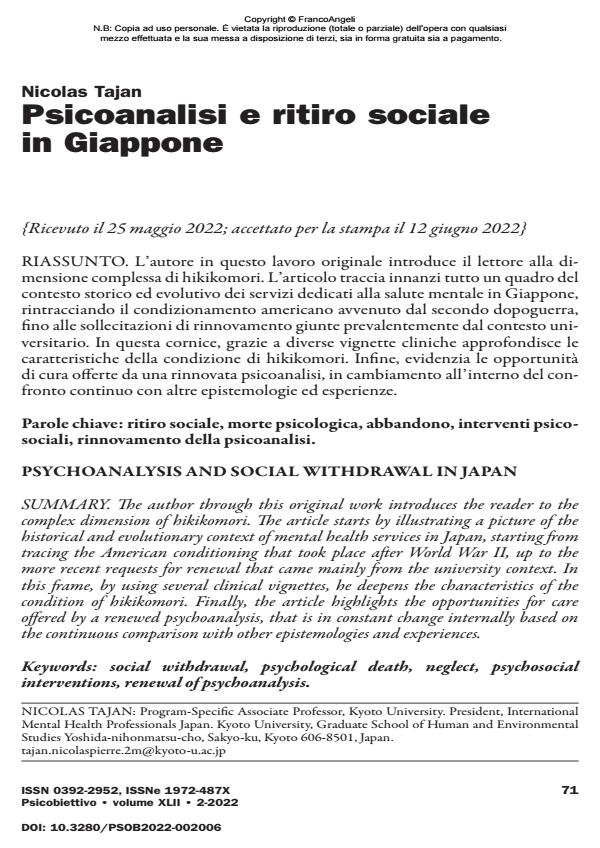Psychoanalysis and social withdrawal in japan
Journal title PSICOBIETTIVO
Author/s Nicolas Tajan
Publishing Year 2022 Issue 2022/2
Language Italian Pages 14 P. 71-84 File size 641 KB
DOI 10.3280/PSOB2022-002006
DOI is like a bar code for intellectual property: to have more infomation
click here
Below, you can see the article first page
If you want to buy this article in PDF format, you can do it, following the instructions to buy download credits

FrancoAngeli is member of Publishers International Linking Association, Inc (PILA), a not-for-profit association which run the CrossRef service enabling links to and from online scholarly content.
The author through this original work introduces the reader to the complex dimension of hikikomori. The article starts by illustrating a picture of the historical and evolutionary context of mental health services in Japan, starting from tracing the American conditioning that took place after World War II, up to the more recent requests for renewal that came mainly from the university context. In this frame, by using several clinical vignettes, he deepens the characteristics of the condition of hikikomori. Finally, the article highlights the opportunities for care offered by a renewed psychoanalysis, that is in constant change internally based on the continuous comparison with other epistemologies and experiences.
Keywords: social withdrawal, psychological death, neglect, psychosocial interventions, renewal of psychoanalysis.
Nicolas Tajan, Psicoanalisi e ritiro sociale in Giappone in "PSICOBIETTIVO" 2/2022, pp 71-84, DOI: 10.3280/PSOB2022-002006